House With Flat Roof: All You Need to Know
Reading Time: 11 minutesSeveral types of roofs are used in modern architecture and private and commercial construction. Like traditional gable roofs, which are shaped like a triangle. Or more geometrically complex mansard, multi-gable, hipped, pyramidal, and dome structures. Flat roofs are another popular type of structure that has been gaining popularity in the private construction segment in recent decades. Why does this option look like a practical alternative to sloping roofs? What are the standard features of an average house with a flat roof?

What is a Flat Roof?
A flat roof is a type of roofing system characterized by a flat or nearly flat surface, typically with a slight pitch to facilitate water drainage. Unlike traditional pitched roofs with a steep incline, flat roofs are designed to be almost level. This design is trendy in modern architecture for residential and commercial buildings, especially in areas with low rainfall.
Flat roofs offer a sleek and contemporary aesthetic, making them a favored choice for modern homes and buildings. They provide a versatile space that can be utilized in various ways, such as creating a rooftop garden, an outdoor patio, or additional living space. This added functionality can significantly enhance the value and usability of the property.
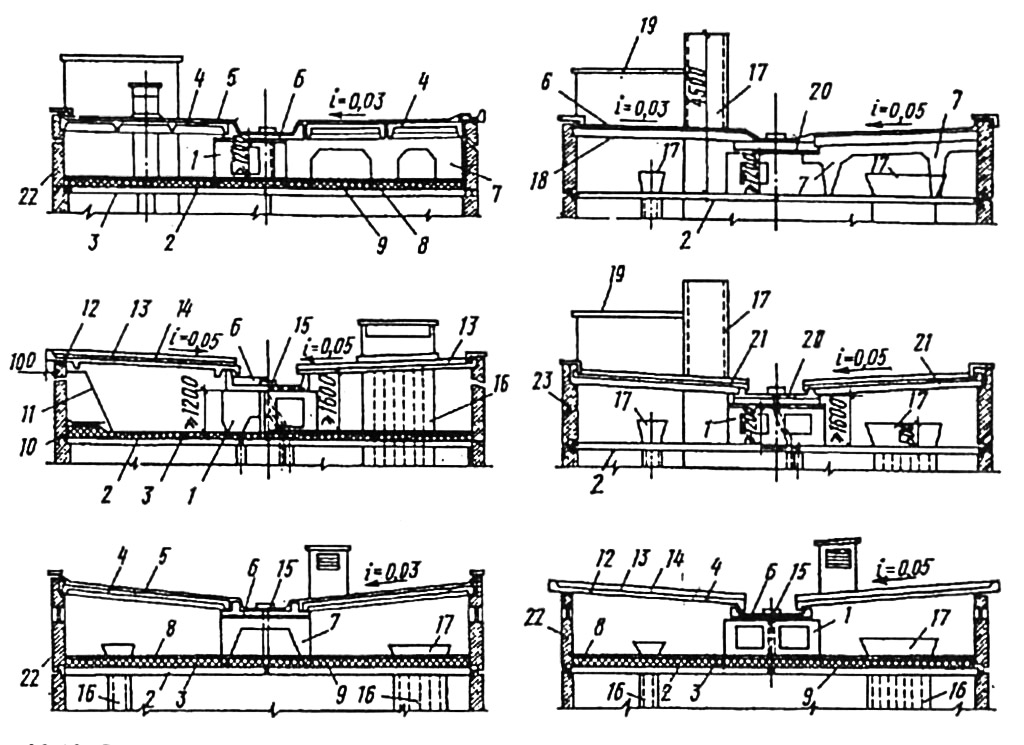
The diagram includes the following elements:
- Supporting element
- Attic floor slab
- Insulation
- Uninsulated roofing slab
- Roll roofing membrane
- Water collection tray
- Supporting frame
- Protective layer
- Vapor barrier
- Bitumen felt strip
- Supporting element of the cornice panel
- Roofing slab for non-roll roofs
- Mastic or painted waterproofing
- U-shaped joint cover
- Roof drain funnel
- Ventilation block
- Ventilation block cap
- Insulated roofing slab
- Elevator machine room
- Insulated tray slab
- Layered roofing slab
- Uninsulated cornice panel
- The same, but insulated.
In commercial buildings, flat roofs are often used to house mechanical equipment like HVAC systems, which are easier to install and maintain on a flat surface. The slight pitch of a flat roof ensures that water drains away efficiently, preventing water accumulation and potential damage. Effective waterproofing is essential to ensure that the roof remains durable and leak-free.
Flat Roof Home: Key Features
According to Denis Tchernov, a roofing expert and contractor, flat roofs are more often seen on commercial buildings such as large warehouses or shopping centers. In recent years, however, flat structures have become a conscious choice for private country houses, cottages, villas, townhouses, and even extensions.
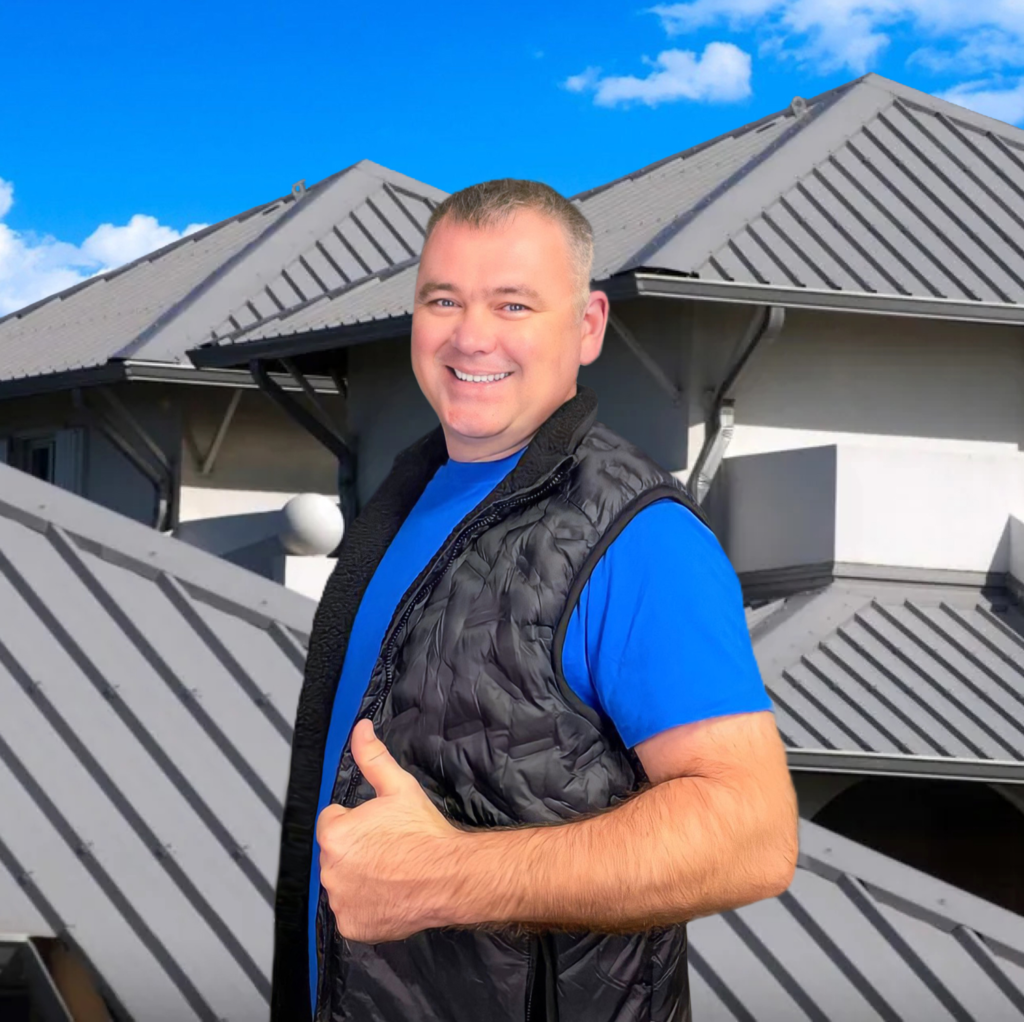
Denis Tchernov:
Flat roofs got their name due to the minimum angle of inclination. Of course, the angle of inclination of flat roofs is not zero. Nevertheless, it is much smaller compared to sloping structures.
– There are three or four primary reasons why houses with flat roofs are famous today. Let’s start with the first one. Some flat roofs can be transformed into additional space (depending on the frame, base, and top material).
– Flat roofs with proper basement and covering can be transformed into outdoor space. All you need to do is to mount comfortable walking surfaces, furniture, and lighting. Sometimes, homeowners even place a grill outdoor patio or swimming pool on the flat rooftop house*. This solution is especially in demand in urban areas, where every square meter is valuable. Sounds good.*
– When it comes to commercial roofing, you can install equipment on them. Like ventilation. Or air conditioning and other engineering equipment. Such buildings have dozens of them. It is impossible or technically challenging to install on an inclined surface. In addition, it is easier to maintain equipment on a flat surface.
– For the same reason, you can place solar panels on the flat roofs of private houses. Or green spaces and other elements will make your home’s appearance unique, reducing the monthly payment you spend on air conditioning. Or you can hide your roof and don’t waste money on its appearance. It’s up to you.
– A flat roof can be cheaper for some reasons. You don’t need a complex roofing frame. You need less materials. You can build such a flat roof options in the short term. Additionally, flat roofs can contribute to energy efficiency by reducing heating and cooling costs. While some flat roofing materials can be suitable for DIY installation, seeking professional installation for optimal results is often recommended, especially for more complex projects.
– Lastly, flat roofs and windows*, although they usually require seasonal maintenance and close checking for leaks, are easier to clean and maintain.
Engineering Features of Flat Rooftop House
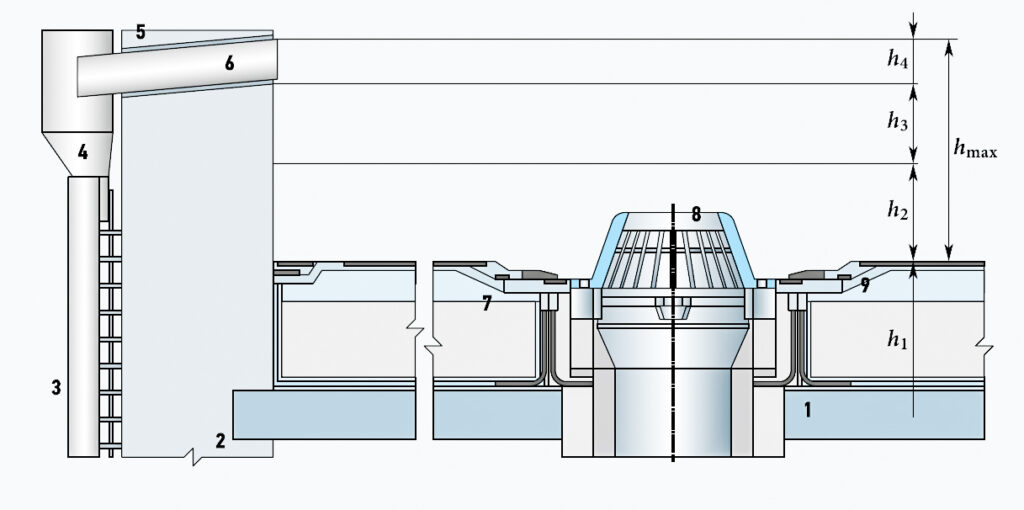
1 — beam; 2 — outer wall; 3 — external downspout; 4 — water collection tank; 5 — parapet; 6 — emergency drain; 7 — roofing; 8 — internal drain funnel; 9 — roof (excerpt from [3]); h₁, h₂, h₃, h₄, and h_max — heights of rainwater volumes: wetting the roof surface and its elements, calculated for internal drains, accumulated, emergency, and total maximum
Every roof has its enemy. For metal, it is corrosion, and for wood shingles, it is rot and termites. The primary enemy of any flat roof is heavy rain. Another one is melting snow. If rain or melting water is not a serious problem for roofs with a significaАnt slope, then it can lead to leaks on flat roofs.
The first thing you should pay special attention to when designing a flat roof is the drainage. It is a rule. Even the most reliable material will leak with standing puddles on its surface. Therefore, engineers pay special attention to gutters when designing houses with flat roofs.
Leaks are bad. Even minor ones. Because they can be invisible. Or hidden. It is also worth protecting the most vulnerable areas of the whole roofing system from potential leaks. Like seams. For example, seams between two sheets of roofing membranes. Or so-called flashings, installed in corner joints, near walls, or along the perimeter of roofing elements.
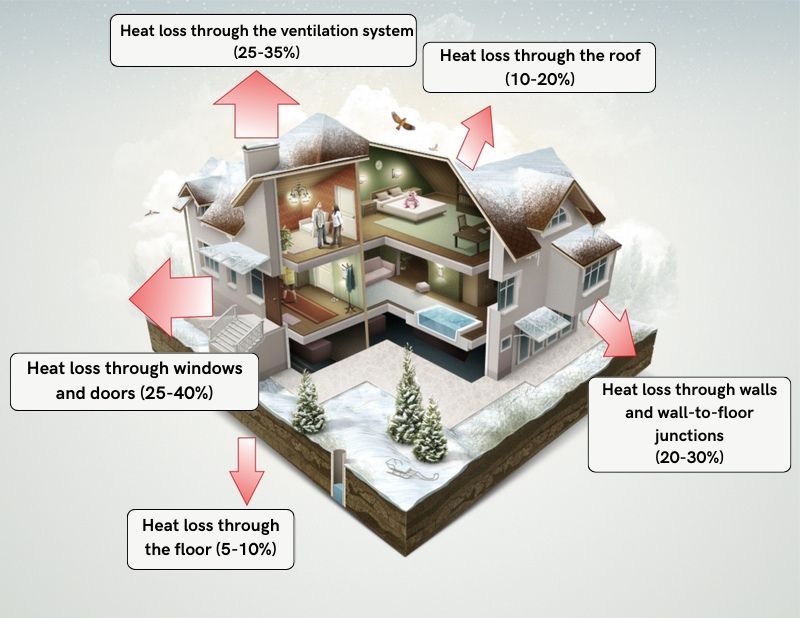
The second crucial aspect is the thermal insulation of the roof. Thermal insulation not only protects the house from heat loss. It also prevents it from heating up in the summer. Modern membrane materials with increased energy efficiency cope with this task quite well.
Finally, it is necessary to calculate the load on the building’s roof and strengthen the frame. Take into account the weight of the equipment (especially important for large commercial buildings) and snow load (for regions with high rainfall). Flat roofs are less susceptible to strong winds. However, they should be installed properly. All materials should be firmly fixed to the surface.
Why Home with a Flat Roof is a Good Choice

Firstly, it has an aesthetic but minimalist design. The architectural style of houses with flat roofs allows you to focus attention on the facade and the surrounding area.
Secondly, architects believe that houses with flat roofs will be a relevant trend for decades to come, especially considering environmental solutions (eco-friendly green roofs) or roofs with decks and rooftop gardens.
Thirdly, houses with flat roofs can be more energy efficient due to lower air conditioning costs. Such roofs absorb less sun rays.
A completely flat front roof is the only solution for a large rear area. This is why you rarely see warehouses and malls with sloping roofs while sloping roofs are good for cottages and country houses.
Finally, an average flat roof can be the most money-saving solution since its installation requires fewer building materials.
Various Roofed Homes: From Green to Solar Panels to Slate
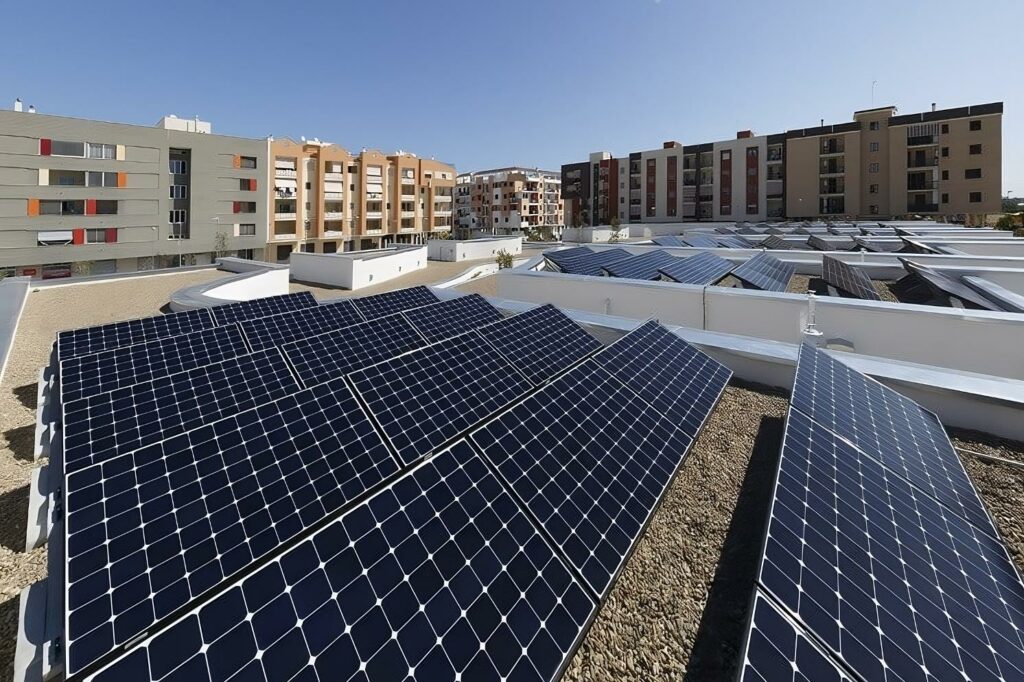
Roofers in the US may use several roofing materials when constructing houses with flat roofs.
BUR technology is used in commercial roofing but is rarely used in modern construction. BUR, or built-up roof, is a traditional and widely used method for constructing flat roofs. It involves multiple layers of bitumen and fabric, making it durable and able to withstand severe weather conditions. BUR roofs are cost-effective and fire-resistant but are heavier and take longer to install than other roofing types.
Another time-tested solution is modified bitumen or asphalt roofing. However, as with previous technology, these materials are not considered the best choice for modern homes with flat roofs. They are not eco-friendly or durable.
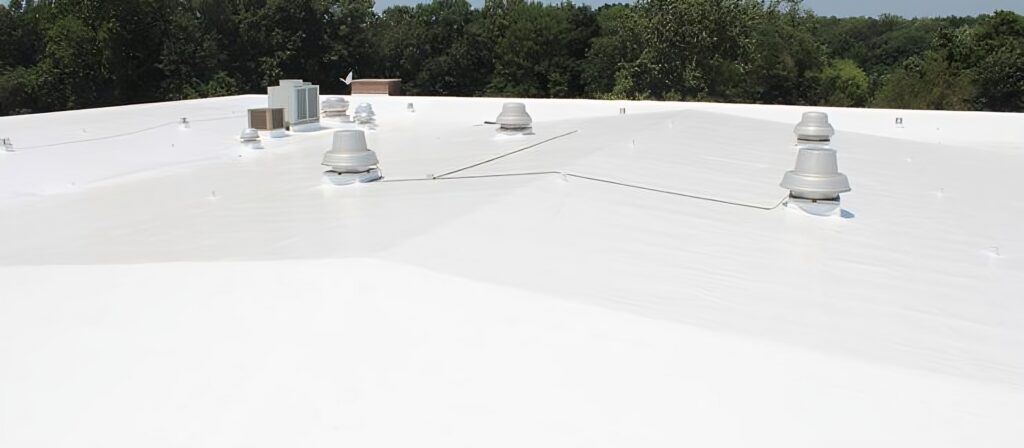
In the low-rise construction and residential segments, membranes made from layers of PVC and TPO, or time-tested rubber roofing, are used more often. Each of these options has its operational features and limitations.
Even though roofing membranes may be similar in appearance, they differ in thickness and the additives used in their composition. Depending on the additives, elasticity, strength, durability, and resistance to chemicals or UV rays change, too.
A green flat roof is an eco-trend. This technology will appeal to those who follow environmental trends and want to turn the roof into a garden or greenhouse. One of the non-obvious benefits of a green flat roof is natural insulation.
For those looking for economic profitability, houses with solar panels or installed water heating equipment are considered long-term investments.
Finally, roofs with a slight slope can be covered with wood, metal, or slate. However, these materials are more often used when installing sloping structures.
Types of Flat Roofing
Flat roofing is popular for residential and commercial buildings due to its sleek, modern aesthetic and numerous benefits. Several types of flat roofing systems are available, each with its unique characteristics, advantages, and disadvantages.
Flat Roof Construction
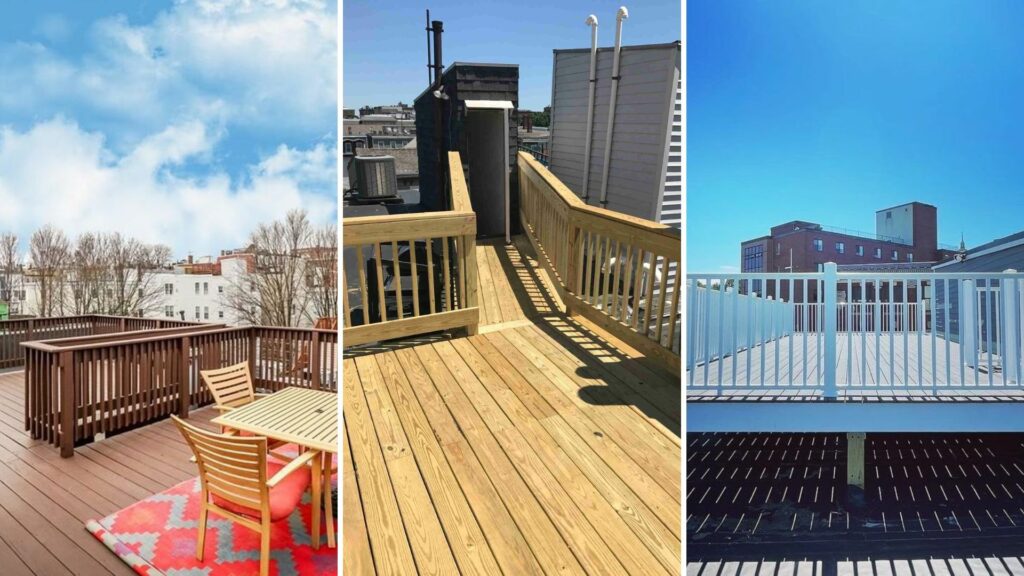
Constructing a flat roof involves meticulous steps to ensure durability and resistance to harsh weather conditions. Here’s a breakdown of the typical construction process:
- Preparation of the Roof Deck: The roof deck serves as the foundation for the flat roof. It must be thoroughly cleaned, dried, and debris-free to ensure a smooth and secure installation.
- Installation of the Roofing Membrane: The roofing membrane is the critical waterproof layer applied to the roof deck. This membrane can be made from various materials, including built-up roofing (BUR), modified bitumen, or single-ply membranes like PVC or TPO. Each material offers different benefits in terms of durability, flexibility, and resistance to environmental factors.
- Application of Multiple Layers: Depending on the chosen roofing system, multiple layers may be added to enhance protection and longevity. These layers can include insulation to improve energy efficiency, roofing felt for additional waterproofing, and surfacing materials to protect against UV rays and physical damage.
- Installation of Flashing and Drainage: Flashing is installed around roof penetrations such as vents, skylights, and chimneys to prevent water intrusion. Effective drainage systems, including gutters and downspouts, are crucial to direct water away from the roof, preventing standing water and potential leaks.
- Final Inspection and Testing: Once the flat roof is constructed, it undergoes a thorough inspection and testing process to ensure it is watertight and functioning correctly. This step is vital to identifying and addressing any potential issues before they become significant problems.
Flat roof construction requires specialized knowledge and skills, so homeowners should hire professional roofing contractors. With proper construction and regular maintenance, a flat roof can provide a durable and long-lasting surface, offering aesthetic appeal and practical benefits for many years.
Flat Roofing Systems and Materials
Flat roofing systems and materials have come a long way in recent years, offering homeowners and businesses a wide range of options to suit their needs and budgets. Some of the most common flat roofing systems and materials include:
House with Flat Roof: Cold and Warm
Drainage and insulation are also important. Several types of thermal insulation can be used to construct flat-roof homes. Depending on the location of the thermal insulation layer, the roof can be warm, cold, or inverted.
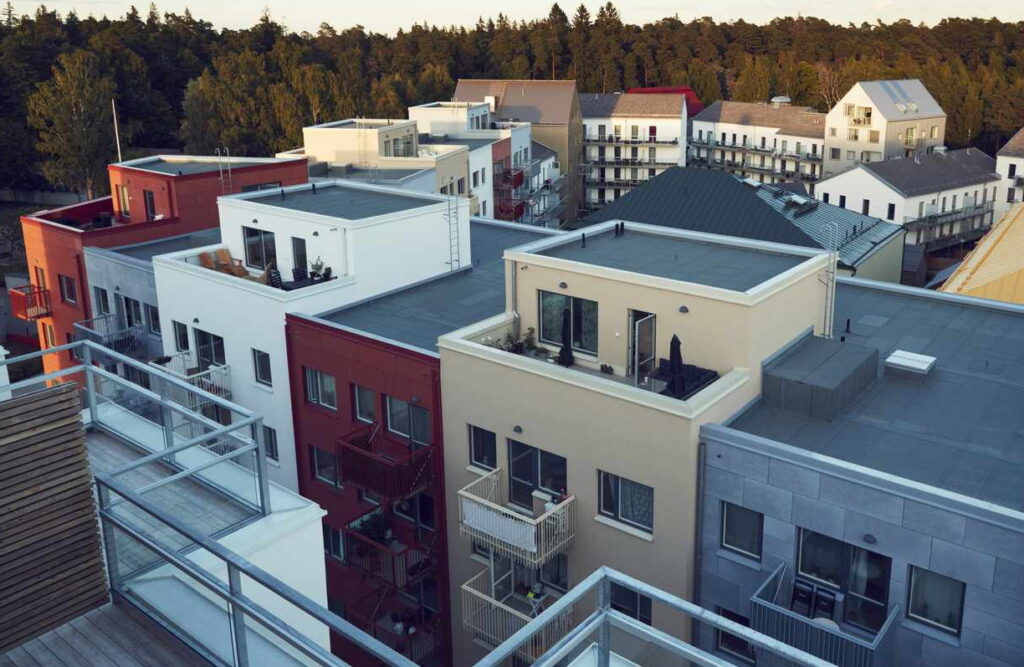
Each approach has its advantages. For example, warm roofs, where thermal insulation is placed under the roofing membrane, are often chosen when constructing commercial and residential buildings.
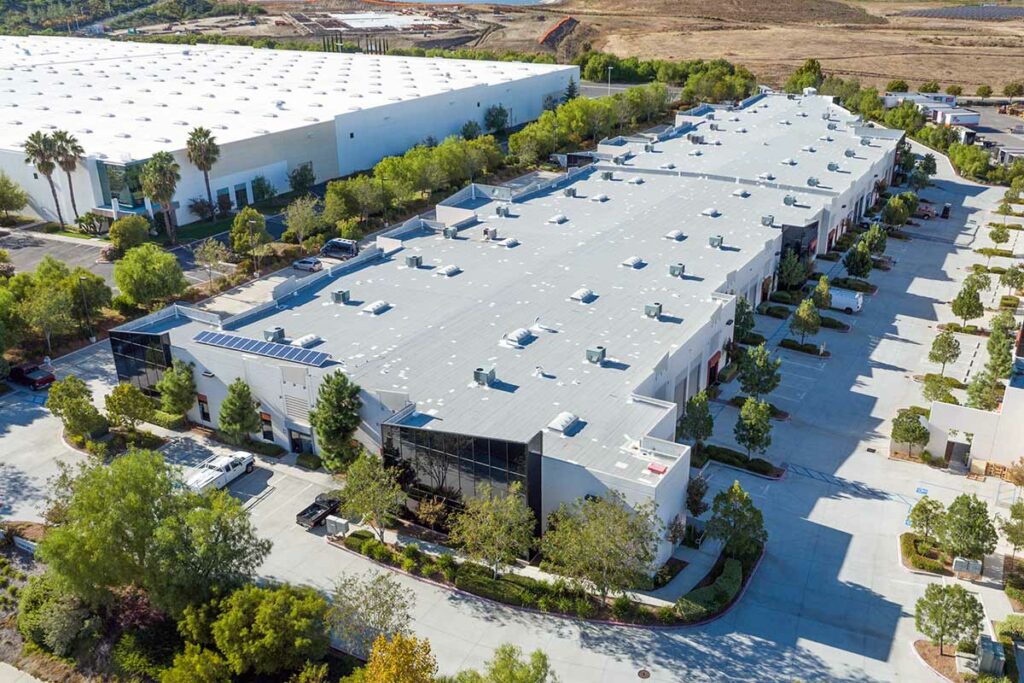
Inverted roofs are compatible with green roofs or flat roofs with decks or terraces. Consult a roofer to learn more about insulation.
What to Keep in Mind Building a Flat Rooftop House with a Rooftop Garden?
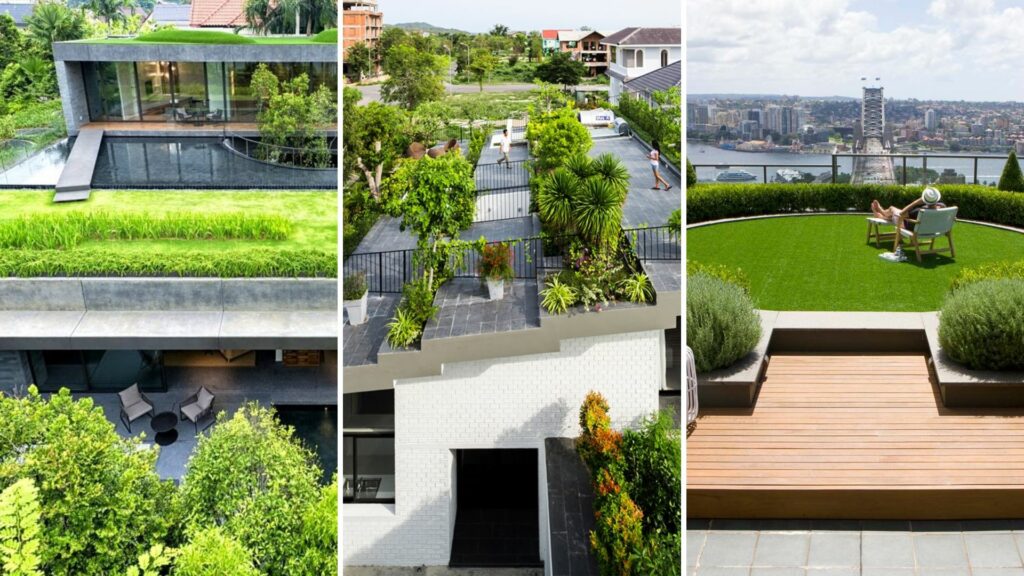
As we said earlier, flat roofs should have a slight slope. The slope level is calculated depending on the architectural features of the building and the roof area. You should also consider the type of roofing material and other factors. The average slope is at least 1-2%, but it could be more significant.
Despite the slope, water can still accumulate on the surface. Therefore, roofers pay attention to drainage systems that drain rain or meltwater into gutters. Don’t skimp on drainage.
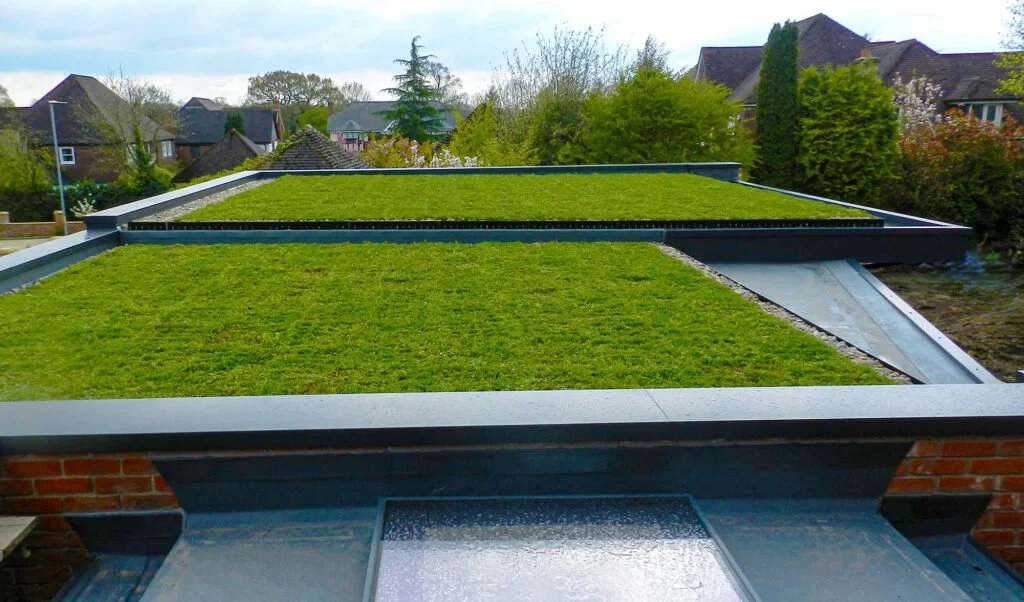
A critical aspect is waterproofing. Since water stays on the surface of a flat roof for longer than on a sloping surface, the roofing material must be waterproof. Even a small hole can lead to expensive repairs.
Firstly, you must carefully weld or glue the roofing sheets or membranes during installation. In some cases, the entire built-up roofing surface is covered with waterproofing material. In this case, it is better to play it safe.
Secondly, roofers waterproof those locations on the roof surface that are most susceptible to leaks, such as joints between two or three sheets of roofing material, places where the material adjoins corners and walls, and places where air conditioners, chimneys, and so on.
Flat roofs are susceptible to mechanical damage. The exception is the exploited and other flat roof options you can walk on. Roofing materials are designed for different levels of foot traffic. Some flat roofs (with decks) can withstand foot traffic, furniture, and various activities.
Home with Flat Roof: Disadvantages
Houses with a flat roof have their drawbacks. You need to inspect and properly maintain such roofs regularly. To do this, you should contact a local roofing service company.
The second disadvantage is the relatively short service life of flat roofs. On average, flat roofing materials last 20 years. After that, they require partial or complete replacement. However, nowadays, you can find solutions that last 50 years or more. Service life also directly depends on weather conditions and installation quality.
The third disadvantage is climatic factors. Ice dams and standing water are standard for flat roofs. What is more, some roofing materials are not resistant to UV protection. As a result, after 5-10 years, they begin to lose elasticity, crack, or fade in the sun.
Due to their architectural features, flat roofs do not insulate as effectively as pitched roofs. Modern single-ply membranes and additional insulation can be suitable solutions in this case, but they are more expensive than traditional coatings.
Flat roofs can provide additional outdoor space, but they limit your architectural options. For example, it is extremely difficult to create an attic space with a flat roof.
Maintenance Tips for Owners of Houses with Flat Roofs
Attention! Roofing inspections and seasonal maintenance can be dangerous. If you do not have safety equipment and roofer skills, contact a roofer. Trust your roofing inspections and maintenance to local contractors.
Homes with flat roofs should be inspected at least twice a year and after heavy rainfall or hurricanes. There should be no mechanical damage, standing water, cracks, blisters, etc. Try not to damage the roof while you are checking it. Use special boots.
Particular attention must be paid to the seams, overlapped areas, and flashings, which we discussed above. Don’t rush. You need to check everything carefully.
If you notice leaks, even minor cracks, or other damage, repairs must be made ASAP. If leaks are not repaired, water can damage the building’s roofing base, frame, and internal structures. Typically, special adhesives or special patches are chosen for repairs (depending on roof type). In some cases, the roofing material is partially replaced. But renovation, repair and replacement are time and money-consuming. Patches are much cheaper.
Another important aspect is regular (at least twice a year) cleaning of debris on the surface. If not done, the gutters will become clogged, and standing water may collect on the surface. According to roofers, clogged gutters are one of the most widespread problems for owners of houses with flat roofs.
Let’s Sum It Up: Flat Roof Home has Pros and Cons
Houses with flat roofs are a popular construction solution in commercial and private real estate throughout the US.
Different flat roofing options are available, from traditional to innovative and trendy. Some are solid and time-tested BUR, eco-friendly green roofs, cozy decks, or modern membranes. Some flat roofing materials can be suitable for DIY installation, but professional installation is often recommended for the best results.
However, before you start building or buying a home with a flat roof, you should compare the advantages and drawbacks of these designs, consider the need and total cost of long-term maintenance, and the service life of most roofing materials.
Denis is the driving force behind ID Flat Roof, a leading company in Boston specializing in flat roof repair and installation for over 20 years.
Expertise:
Denis excels in PVC, TPO, EPDM, and rubber roofing. His meticulous approach ensures quality and customer satisfaction.
Innovation:
Denis incorporates cutting-edge solutions like skylights and solar PV roofing.



